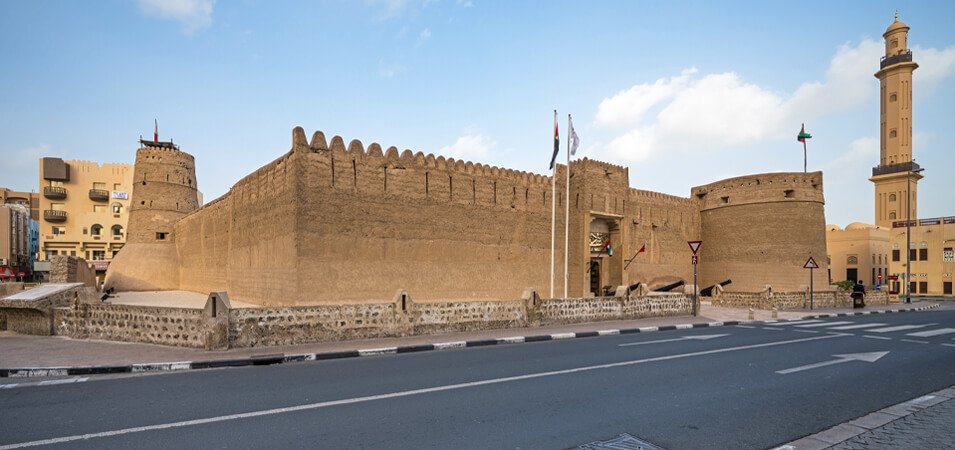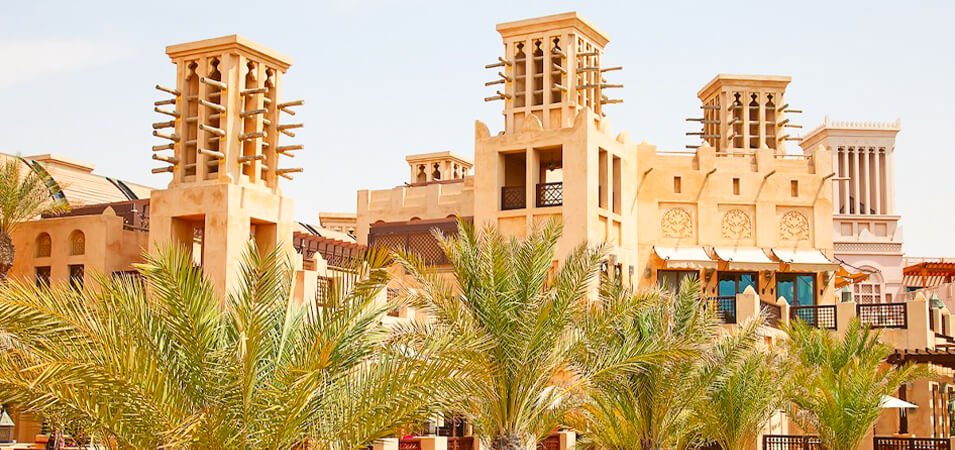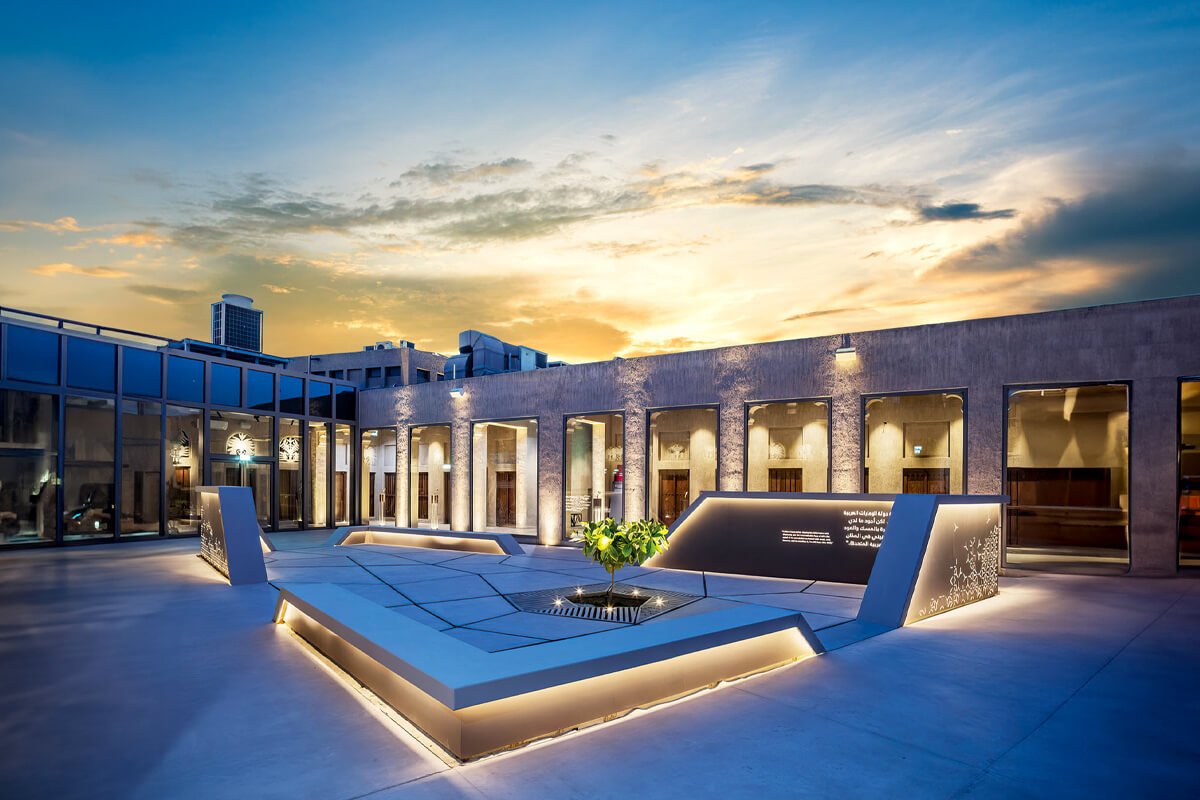Dubai Marina is often celebrated for its stunning skyline, luxurious lifestyle, and vibrant social scene. Yet, beneath this modern facade lies a rich historical tapestry that stretches back centuries. Long before the towering skyscrapers and opulent yachts, this area was home to thriving communities whose way of life was deeply connected to the land and sea.
Archaeological discoveries in the region indicate that human habitation in the Dubai Marina area dates back to the 19th century, with evidence of even earlier settlements found in the surrounding areas. These historical sites offer a fascinating glimpse into the lives of those who walked these lands long before us. By exploring them, visitors can uncover ancient artifacts, experience traditional architecture, and gain a deeper understanding of Dubai’s transformation from a modest trading post to a global metropolis.
Historical Sites in Dubai Marina
Al Fahidi Historical Neighbourhood
The Al Fahidi Historical Neighbourhood, also known as Al Bastakiya, is one of Dubai’s most treasured heritage sites. Nestled in the heart of the city, this district is a window into the past, offering a stark contrast to the surrounding modernity. Established in the late 19th century by Persian merchants, Al Fahidi is characterized by its narrow alleys, traditional wind-tower architecture, and serene courtyards.
- Wind Towers (“Barjeel”): Ingeniously designed to capture and direct cool breezes into the homes.
- Narrow alleys and courtyards: Reflecting the lifestyle and architectural practices of earlier times.
- Cultural hubs: Art galleries and the Sheikh Mohammed Centre for Cultural Understanding offer insights into Emirati culture.
Dubai Museum
Housed within the historic Al Fahidi Fort, the Dubai Museum is a must-visit for anyone interested in the city’s rich history. Built in 1787, the fort is Dubai’s oldest surviving building and was originally constructed to defend the city against invasions. Over the centuries, it has served various roles, including a royal residence, a weapons depot, and a prison, before being transformed into a museum in 1971.
Inside, the museum offers an engaging journey through Dubai’s past. Life-size dioramas recreate scenes of everyday life in the pre-oil era, from bustling souks to traditional dhow-building yards. Visitors can also view historic artifacts, including ancient pottery, weapons, and musical instruments. One of the highlights is the multimedia presentations that illustrate Dubai’s astonishing transformation from a small fishing and pearl diving village to a bustling global city.

Sheikh Saeed Al Maktoum House
Once the residence of Dubai’s former ruler, Sheikh Saeed Al Maktoum, this historic house is now a museum that offers a fascinating insight into the city’s history and the life of its ruling family. Located in the Al Shindagha area, the house was built in 1896 and served as the seat of the Al Maktoum family until 1958.
- Traditional Emirati architecture: Wind towers, large courtyards, and ornate rooms.
- Exhibits: Photographs, documents, and personal items of the ruling family, including rare coins, stamps, and maps.
- Historical significance: Provides a deeper connection to Dubai’s past and the ruling family’s lifestyle.
Al Shindagha Museum
Located in the historic Al Shindagha district, the Al Shindagha Museum is a sprawling complex of heritage houses that have been meticulously restored and converted into museums. This area was once the residence of Dubai’s ruling family and is a crucial part of the city’s history.
- Dubai Creek exhibit: “Dubai Creek: Birth of a City” explores the creek’s role in shaping Dubai’s identity.
- Traditional crafts and culture: Learn about perfume making, Emirati customs, and the economic growth of Dubai.
- Interactive displays: Engage with history through multimedia presentations and interactive exhibits.
Jumeirah Archaeological Site
The Jumeirah Archaeological Site is one of the UAE’s most significant historical landmarks, offering a rare glimpse into the region’s ancient past. Discovered in 1969, the site dates back to the Abbasid period, around the 6th century, and was once a thriving trading settlement along a caravan route linking Iraq and Oman.
- Artifacts: Pottery, coins, tools, and jewelry discovered at the site.
- Caravanserai ruins: Remnants of an ancient inn where travelers rested and traded.
- Historical insights: Provides a unique opportunity to connect with Dubai’s ancient heritage.
Hatta Heritage Village
Located in the Hajar Mountains, about a two-hour drive from Dubai Marina, the Hatta Heritage Village is a well-preserved example of a traditional mountain settlement. The village, which has been carefully restored to its original state, provides a glimpse into the rural life of the past.
Visitors to Hatta can explore the village’s various buildings, including a mosque, a traditional majlis (meeting room), and a palm tree orchard. The surrounding mountains offer breathtaking views and numerous opportunities for outdoor activities, such as hiking, biking, and picnicking. The Hatta Heritage Village is a peaceful retreat from the hustle and bustle of the city and provides a deeper understanding of the region’s history and culture.
Exploring Dubai’s Cultural Heritage
Traditional Arabic Architecture in Dubai Marina
While Dubai Marina is known for its modern skyscrapers and cutting-edge design, it also pays homage to the region’s architectural heritage. Traditional Arabic architecture in Dubai is a blend of natural materials and innovative design that reflects the environmental and cultural context of the region.
- Wind Towers (“Barjeel”): Ingenious designs that capture and funnel cool breezes into the homes, providing natural ventilation long before the advent of modern air conditioning.
- Open courtyards: Private outdoor spaces that offer natural light and ventilation.
- Use of coral stones, gypsum, and palm fronds: Materials that reflect the connection to the surrounding environment.

Daily Life in Ancient Dubai
The archaeological discoveries in and around Dubai Marina have shed light on the daily lives of its ancient inhabitants. From pottery shards to fishing tools, these artifacts tell the story of a community that thrived on the shores of the Arabian Gulf.
Fishing, pearling, and trade were the mainstays of the local economy, and the sea played a central role in the lives of the people. The discovery of ancient gravesites has also provided insights into the burial customs and beliefs of these early communities, revealing a deep connection to the land and the afterlife.
Uncovering the Past
Ancient Artifacts Found in Dubai Marina
Archaeological excavations in and around Dubai Marina have uncovered a treasure trove of artifacts that date back over 4,000 years. These discoveries include pottery, tools, and jewelry, each piece providing a tangible link to the region’s ancient past.
One of the most significant finds in the area is the remnants of a large grave site, believed to be from the Umm Al Nar period (2500-2000 BCE). The grave, along with the artifacts found within it, offers valuable insights into the burial practices and social structure of the time.
Hidden Historical Sites in Dubai Marina
While many of the historical sites around Dubai Marina are well-known, there are also hidden gems that offer a more intimate connection to the past. These lesser-known locations are often overshadowed by the grandeur of Dubai’s more famous attractions, yet they hold stories that are just as compelling.
- Al Fahidi Historical Neighborhood: Narrow alleys, serene courtyards, and wind towers that offer a glimpse into Dubai’s history.
- Dubai Museum: The city’s oldest existing building, offering an immersive experience of Dubai’s transformation.
- Jumeirah Archaeological Site: An ancient trading settlement with artifacts that reveal the lives of early inhabitants.
Conclusion
Exploring the historical sites in and around Dubai Marina is not just a journey through time, but a journey through the layers of culture, tradition, and innovation that have shaped this dynamic city. From the winding alleys of Al Fahidi Historical Neighborhood to the ancient artifacts found at the Jumeirah Archaeological Site, each location offers a unique glimpse into a past that continues to influence the present.
Dubai’s transformation from a modest fishing village to a global metropolis is nothing short of remarkable, and these historical sites provide a tangible connection to the city’s roots. They remind us that beneath the gleaming skyscrapers and luxurious lifestyle, there lies a deep and rich history waiting to be discovered.
